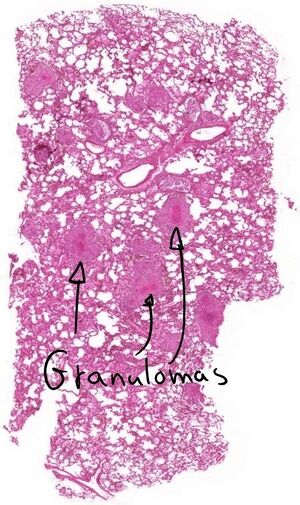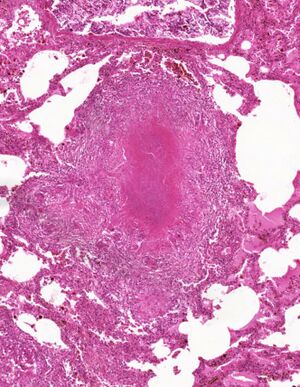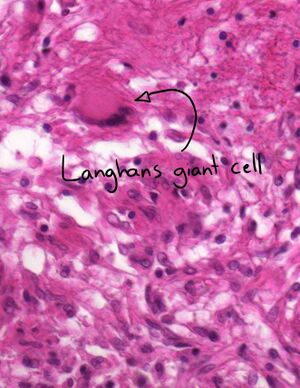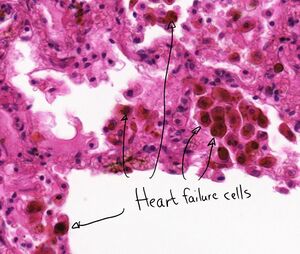31. Miliary tuberculosis of the lung
Staining: HE

Organ: Lung
Description:
We can see multiple granulomas with necrotic centres. We can see some Langhans giant cells, lymphocytes, fibroblasts and epithelioid cells in the granulomas. There are some pigments present.
Diagnosis: Miliary tuberculosis
Causes:
- Infection by mycobacterium tuberculosis
Theory:
Miliary tuberculosis a subtype of primary progressive tuberculosis characterized by the bacterium spreading to multiple organs that end up forming many very small (1-2 mm) granulomas. The bacterium in this case spreads by lymph or blood. The name comes from the x-ray morphology which looks like millet seeds spread throughout the lungs.
The granulomas are soft because they contain necrotic centres. Macroscopically we can see caseous necrosis. The granulomas are more numerous in the upper lobes. This is because the upper lobes are better ventilated (see pathophysiology), and the m. tuberculosis bacterium is highly aerobic. The granulomatous inflammation in tuberculosis is due to a type 4 hypersensitivity reaction.

The pigments that are present can be either:
- Haemosiderin in heart failure cells
- A result of too long formalin fixation
- Anthracosis


